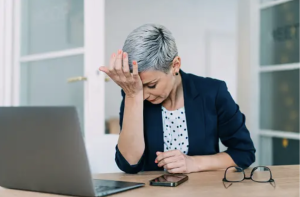Midlife iron deficiency
If you’re a woman aged between 40 to 55, there’s a good chance that you’re iron deficient. The official statistics show 15% of non-pregnant women in Australia are iron deficient. But in practice, I notice a much higher level of outright or subclinical deficiency at this time of life.
Iron deficiency may be underdiagnosed when only testing haemoglobin levels. This can be in normal range but the iron storage (ferritin) is low. As we age or when living with chronic inflammation, Vic Health guidelines note that iron deficiency may occur even with ferritin levels up to 60 -100 ug/l (compared to the so-called ’normal’ ferritin range is 15 – 200 ug/l).
If you’re always tired, get frequent infections, bruise easily or start puffing climbing a flight of stairs – it’s important to tell your GP (and me!) about these symptoms and ask for an iron studies blood test. It’s also important to rule out serious causes such as coeliac disease (sometimes people don’t get diagnosed til mid life!)

Three common causes of midlife low iron
The leaky bucket: Heavy periods, long or frequent bleeds can be more common at this time of life. Or perhaps you’ve had a lifetime of menstrual issues like these, multiple pregnancies or years of breastfeeding. When this is the case, we sometimes refer to it as the ‘leaky bucket’. By this we mean you might be topping up your iron stores with food or some relatively low dose/hard to absorb supplements but the ongoing loss is greater than the gain.
Frequent infections or inflammation: This can be a chicken or egg situation. The lower your iron the more vulnerable you are to developing infections, and when you’re fighting an infection, your body uses up more of the iron stores! Either way, you may need more iron at this time. Chronic inflammation in the body (such as arthritis or autoimmune conditions), reduces levels of circulating iron. This is due to the inflammatory response in the body that triggers a complex biochemical pathway, ultimately limiting the way iron is transported from cells into the plasma.
Diet: Simply not eating enough iron-rich food can be an obvious culprit in some cases. While many vegetarians are well-practised in maximising their nutritional intake, I see a lot of ‘accidental vegetarians’, flexitarians and plant-based fans who’ve all but stopped eating meat without filling in the nutritional gaps. Other causes include over exercising or eating disorders. A lifetime of dieting or disordered eating can catch up with women as we age.

Source: Monika Kozub on Unsplash
Treat the underlying causes of anaemia
When dietary iron intake is adequate or supplements don’t significantly improve ferritin levels, you may not be fully absorbing and using it. Other than digestive issues that may cause this, one of the biggest culprits is caffeine (green/white/black tea, coffee, energy drinks, guarana, mate, chocolate, etc) and tannin. If consuming these within two hours (before or after) of eating an iron-rich meal or taking a supplement, your absorption can be highly compromised.
Supplements or dietary change alone may not always be enough to correct an iron deficiency. It’s important to identify the cause of heavy or too frequent periods (fibroids, adenomyosis, endometriosis, etc), along with other health or lifestyle-related issues and explore treatment options, with naturopathic and/or conventional support.
Resources: iron deficiency, food and supplements
Here’s a good run down about anaemia, symptoms, iron-rich food sources and supplements.
Keep in mind that if your iron is low, other nutrients such as protein, vitamins and minerals may also be borderline or deficient. There’s even been an upswing in scurvy in recent years in Australia! So it’s wise to take a holistic view of life and food generally. As a naturopath, it’s what we excel at.
My aim is always to supplement you for the shortest time possible, while treating the underlying cause. Let’s work together to identify the culprit and remedy the deficiencies.





